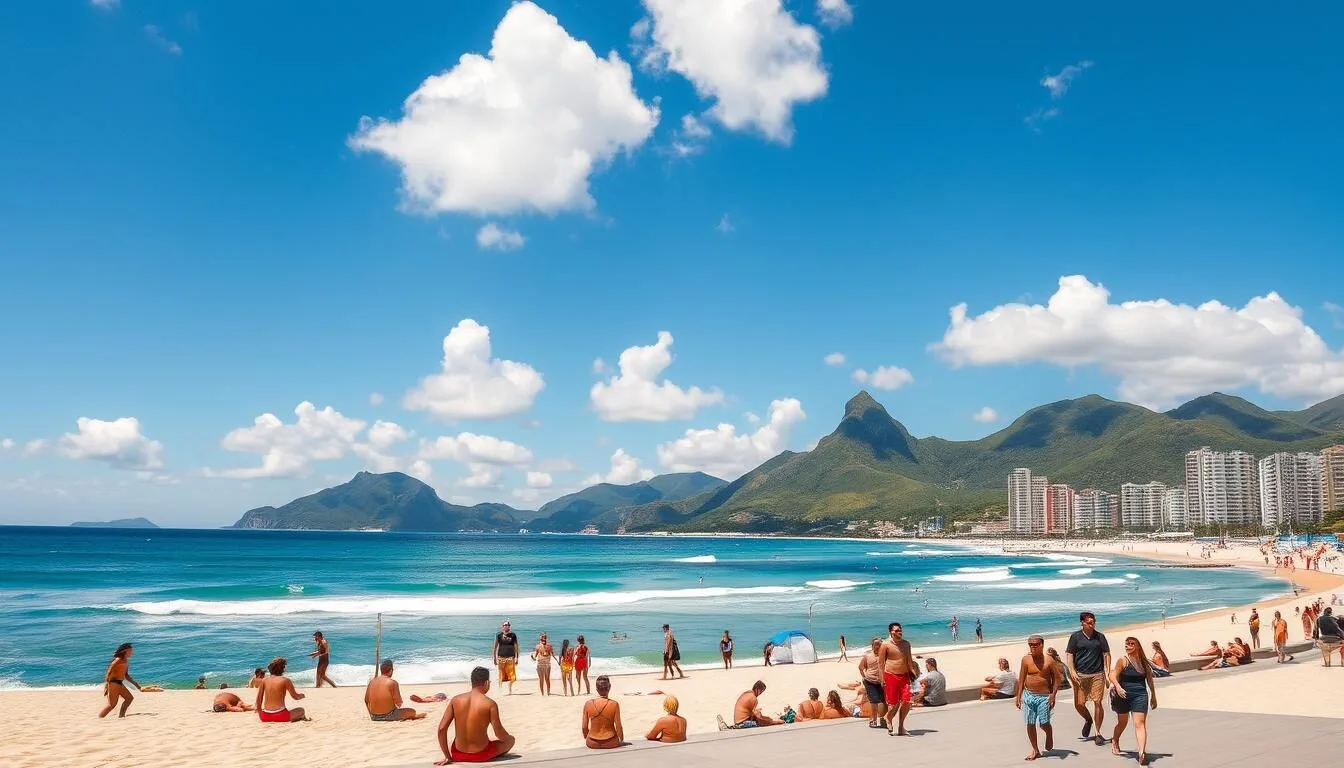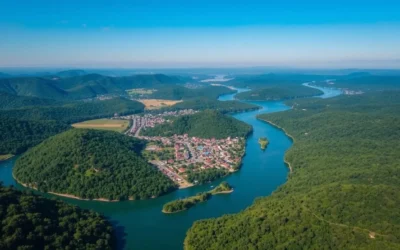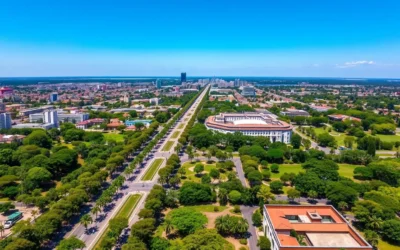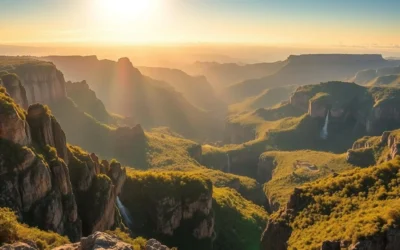✓ Accommodations✓ Flights✓ Rental Cars✓ Tours & Activities
Brazil’s financial powerhouse and cultural capital, known for its skyscrapers, gastronomy, and diverse immigrant heritage.
2. Rio de Janeiro, Rio de Janeiro – Population: ~6,729,894
Home to Copacabana, Christ the Redeemer, Sugarloaf Mountain, and famed for Carnival and beaches.
3. Salvador, Bahia – Population: ~2,711,840
Rich in Afro-Brazilian culture, colonial architecture, and vibrant music and dance traditions.
4. Fortaleza, Ceará – Population: ~2,400,000
Coastal city known for its beaches, lively forró music scene, and as a regional tourism hub.
5. Belo Horizonte, Minas Gerais – Population: ~2,373,224
Modernist-designed capital with a reputation for barbecues, traditional mining cuisine, and cultural festivals.
6. Brasília, Federal District – Population: ~2,207,718
Purpose-built capital famed for Oscar Niemeyer’s modernist architecture and wide avenues.
7. Curitiba, Paraná – Population: ~1,718,421
Praised worldwide for green spaces, innovative urban planning, and efficient public transport.
8. Manaus, Amazonas – Population: ~1,598,210
Gateway to the Amazon Rainforest, known for its opera house and jungle tours.
9. Recife, Pernambuco – Population: ~1,478,098
“Brazilian Venice” with canals, historic architecture, and famous Carnival and frevo dance.
10. Belém, Pará – Population: ~1,407,737
Tropical city by the Amazon River, known for its indigenous cuisine, market Ver-o-Peso, and river culture.
11. Porto Alegre, Rio Grande do Sul – Population: ~1,372,741
Cultural and economic center of Brazil’s south; known for gaucho traditions and vibrant arts scene.
12. Goiânia, Goiás – Population: ~1,171,195
Modern planned city surrounded by agriculture, noted for country music culture (“sertanejo”).
13. Guarulhos, São Paulo – Population: ~1,169,577
Major transportation hub containing São Paulo’s international airport and dense suburbs.
14. Campinas, São Paulo – Population: ~1,031,554
High-tech and industrial center with strong universities and research institutes.
15. Nova Iguaçu, Rio de Janeiro – Population: ~1,002,118
Major suburban city in Greater Rio, known for its transport links and local commerce.
16. Maceió, Alagoas – Population: ~954,991
Known for its beautiful coastal lagoons, beaches, and relaxed tourism atmosphere.
17. São Luís, Maranhão – Population: ~917,237
Colonial center with Portuguese architecture and vibrant reggae-influenced music culture.
18. Duque de Caxias, Rio de Janeiro – Population: ~818,329
Industrial suburb in Greater Rio, significant for oil refining and urban culture.
19. Natal, Rio Grande do Norte – Population: ~763,043
Tropical coastal city famed for dunes, bar waterfalls (Genipabu), and relaxed lifestyle.
20. Teresina, Piauí – Population: ~744,512
Unique urban oasis in a semi-arid region, with rich cultural traditions and green spaces.
21. São Bernardo do Campo, São Paulo – Population: ~743,372
Heart of Brazil’s auto industry, home to major factories and working-class heritage.
22. Campo Grande, Mato Grosso do Sul – Population: ~729,151
Gateway to Pantanal wetlands, with ranch culture and regional cuisine centered on beef.
23. Jaboatão dos Guararapes, Pernambuco – Population: ~702,621
Residential and industrial city where Pernambuco’s history meets Atlantic beaches.
24. Osasco, São Paulo – Population: ~677,856
Commercial suburb with a strong retail sector and dynamic urban energy.
25. Santo André, São Paulo – Population: ~662,373
Part of ABC region; formerly industrial, now diversified economy with suburban flair.
26. João Pessoa, Paraíba – Population: ~650,883
One of the greenest cities in Brazil, known for beaches, colonial architecture, and relaxed rhythm.
27. Contagem, Minas Gerais – Population: ~627,123
Industrial neighbor of Belo Horizonte, with strong heavy manufacturing sectors.
28. Ribeirão Preto, São Paulo – Population: ~619,746
Agribusiness hub with festivals and vibrant bar culture.
29. São José dos Campos, São Paulo – Population: ~613,764
Aerospace and engineering center home to Embraer and research institutes.
30. Uberlândia, Minas Gerais – Population: ~563,536
Economic powerhouse in the Triângulo Mineiro region; known for cattle and agribusiness.
31. Sorocaba, São Paulo – Population: ~558,862
Large industrial city with a growing service sector and rich history.
32. Cuiabá, Mato Grosso – Population: ~521,934
Portal to the Amazon Pantanal, known for hot climate and traditional cuisine.
33. Aparecida de Goiânia, Goiás – Population: ~510,770
Suburb of Goiânia with rapid population growth, linked to commerce and services.
34. Aracaju, Sergipe – Population: ~490,175
Coastal capital known for calm beaches and metropolitan planning.
35. Feira de Santana, Bahia – Population: ~481,911
Major inland trade city located at a strategic transport crossroads.
36. Londrina, Paraná – Population: ~471,832
Agricultural and educational center with strong British influence in planning.
37. Juiz de Fora, Minas Gerais – Population: ~470,193
Historical city with universities and lively cultural environment.
38. Campina Grande, Paraíba – Population: ~458,000
Famed for its vibrant São João festival and strong academic institutions.
39. Blumenau, Santa Catarina – Population: ~361,000
Known for its German heritage and hosting one of Latin America’s largest Oktoberfest celebrations.
40. São José do Rio Preto, São Paulo – Population: ~450,000
Regional commerce and health hub with bustling educational and cultural life.
41. Mauá, São Paulo – Population: ~476,000
Industrial city in the ABC region, with a growing logistics sector.
42. Vitória, Espírito Santo – Population: ~365,000
Coastal capital known for its port, beaches, and island setting.
43. Caxias do Sul, Rio Grande do Sul – Population: ~517,000
Major wine-producing center with European immigrant roots and strong industry.
44. Pelotas, Rio Grande do Sul – Population: ~343,000
Historic city with colonial architecture and famed for its sweet pastries.
45. Carapicuíba, São Paulo – Population: ~403,000
Dense suburban city within Greater São Paulo, with a diverse community.
46. São Leopoldo, Rio Grande do Sul – Population: ~237,000
First German colony in Brazil, with industrial and educational importance.
47. Macapá, Amapá – Population: ~503,000
Located on the Equator, facing the Amazon River and known for its fortress.
48. Juazeiro do Norte, Ceará – Population: ~276,000
Pilgrimage city, center of the popular devotion to Padre Cícero.
49. Nova Friburgo, Rio de Janeiro – Population: ~190,000
Mountain town known for its textile industry and Swiss-Brazilian heritage.
50. Itaboraí, Rio de Janeiro – Population: ~240,000
Industrial city near Guanabara Bay, with petrochemical and logistics growth.
The above is subject to change.
Check back often to TRAVEL.COM for the latest travel tips and deals.






